|
Another repost from Bill Caraher.
This past week I enjoyed a nice set of papers at the annual School of Graduate Study’s Scholarly Forum here at the University of North Dakota. I was, however, struck by some trends in the graduate student papers that I did not particularly find useful. My papers tend to conform loosely to a template and some folks have nudged me to write a bit on my template and my general critique of conference papers in my blog. I am not super excited about writing such a pedantic post, but I’ll do it anyway. As always, if you do it some other way, have differing opinions, or just want to hate on me, the comments are open. So, here are five rules for any graduate student giving a paper at a conference: 1. Read your paper. There are three reasons for this. First, it is tremendously difficult to present a complex argument from short notes. Complex arguments rely on a certain amount of intellectual and rhetorical rigor that is typically foreign to a conversations style of speaking. Second, if you have rather extensive notes, one gains little advantage from reading them. If you have extensive notes, might as well write out the entire paper. Finally, people at academic conferences are not there – in general – to be entertained. We’re there to hear sophisticated arguments. If someone in the audience is bored because your presentation style is boring, then they aren’t doing it right. Present a good argument and no one will be bored. 2. No More than Five Words on a Powerpoint Slide. My policy is to avoid the dreaded “Powerpointer” whenever possible. In fact, I’ve given it up for Lent this year. I’ve never quite understood the practice of putting words on a Powerpoint slide that are the same as the words you are reading in your paper. At best, it encourages us to ignore you; at worst it is a distraction. Use The Powerpointer for images that help advance your argument. If images are unnecessary, then skip The Powerpointer and force the audience to focus on your text. 3. Thesis. Provide your thesis within the first 2 minutes of your paper (or in the first 10% of your content). If I have to wait 5 minutes or more to figure out what you’re arguing, then I have lost interest. Your thesis should be supported by historiography or a literature review. As soon as you tell me your thesis, tell me why I should care. My rule is: drop your thesis within the first 2 minutes and then spend the next 2 minutes contextualizing your argument. For a 1500-2000 word paper, it should be 200 words for an introduction concluding with a thesis and no more than 300 words on the secondary literature supporting your thesis. 4. Use a Case Study. I am guilty of trying to say everything that I have ever thought on a topic in a 15-20 minute paper. While these papers stand as personal monuments to my brilliance (cough, cough), they are usually pretty rough on the audience. Recently, I have tried to focus my papers by using a single case study or single, focused argument. I try to keep the case study to around 1000 words and leave a couple hundred words for a conclusion that will relate my single argument or case study to a larger body of evidence. 5. Chose your Last Sentence Carefully. I just discovered this very recently (and in part it is a product of blogging because I never know how to end a blog). A nice, final sentence tells the audience and the moderator that your argument is now done. It avoids the dreaded “that’s all I have to say”, awkward conclusion moment. It also gives the audience something to remember from your paper and gives you one last chance to exude confidence before people begin to pepper you with questions. I know everyone has their own style. In fact, when other people have delivered papers that I wrote, I’ve been told that my somewhat Billtastic style comes through. And I also realize that adhering to a rather formal template can imply that an argument resides – somehow – outside the text (rather than being coterminous and intrinsic in the text). I also know that some disciplines love The Powerpointer more than knowledge itself and so my somewhat primitive attitude toward The Powerpointer probably reflects my rather conservative disciplinary leanings. My post is meant mainly to offer some practical tips to students as try to figure out how to present their research at academic conferences. That’s all I have to say.
0 Comments
 With the NABPR and CTS conference in the books it is time to transition to my project for the CIVA Just Art conference at Wheaton. In just over a week I will be heading out to join other scholars, artists, ministry professionals to explore the roles of faith, justice and the arts. It looks to be a great conference with exhibitions, quality presenters and presentations. As I often do, I tend to bite off more than I can realistically chew. I love conferences in theory (and in actuality as well once my responsibilities for it are over). I hate passing up opportunities to present my research so when the call for papers came I waited until the last moment to throw my proposal out there. With the exhibition last week and Maymester the two previous weeks, the paper has sat dormant for some time. Thankfully I did have some time to work on it at the CTS conference while I was attending to the gallery. My paper will explore the thought of Johann Baptist Metz, a German Catholic political theologian and use his thoughts to engage the work of recent Guggenheim recipient Daniel Heyman. The papers (for good and ill) are only 15 minutes...which actually makes it quite a bit harder to layout Metz' project and make coherent connections to Heyman. But it is exciting to actually be writing this paper that came to mind last year at the CTS conference in San Antonio. In the coming days, I will post briefly about my progress and overall thoughts on their work. Stay tuned...  Formation Matters takes its name from a simple, but evocative play on words. If taken literally, the phrase suggests the relevant topics or concerns relating to formation. Rhetorically however, the phrase implies the overall importance of formation. In a third turn of the phrase, it also hints at the substance or physicality of the artists’ creations through which viewers engage the initial two turns of the phrase.* This plurality of meaning allows for the same in the directions of work chosen for the exhibit. While all the artwork in some way deals with memory and tradition, it also embodies a variety of conceptual approaches. Both Donovan Widmer and Patrick Luber investigate the dynamic and formative relationships between religion and culture. Whereas Katelyn Reiter and Mary Kocal explore the power of family narratives within their own lives. My own work, and that of Cherith Lundin, raises questions about the ambiguities and possible loss of traditions. Micah Bloom’s recent work on the 2011 Minot flood haunts the space between these two positions as a metaphor by regarding his childhood formation and the passing of the paper book. Additionally, while all artists work from particular traditions and influences, be it media or school, John Kaericher’s work often makes explicit visual ties to his mentors. In these ways, the exhibit offers another voice into the conference conversations. Building around the theme of Teaching Theology and Handing on the Faith, the exhibition is rooted in the belief that the visual arts can be remarkable catalysts within these conversations, as well as profound symbols and mediations of the Divine. While the church has historically drawn upon the devotional and didactic potential of art, the engagement and contemplation of contemporary art allows divergent points of affirmation and provocation of its traditions. *The beginning is a modification of Liz Well's introduction to her wonderful text, Land Matters  After a very busy day yesterday with a lot of help from my niece Brittany, the exhibition is up and looks great. The conference starts this evening with the first plenary speaker and people have been trickling into campus. I am so thankful to CTS & Creighton for allowing me this little artistic experiment within a theological conference. I am also in debt to the artists who have shared their work with me and made this a great looking exhibition. I have put together a hastily edited and unedited collection of images from the show into a gallery below. I will update names and piece titles when I have more time. 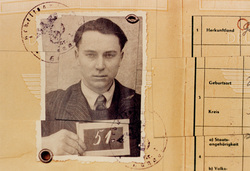 Today I am packing the artwork for the Formation Matters exhibition that I have curated for joint meetings of the College Theology Society (CTS) and the National Association of Baptist Professors of Religion (NABPR). This exhibitions represents the culmination of years (since CTS's meeting at Regis in Denver in 2006) thinking and discussions on how to include art into the conference discussions. Back in 2006 the theme was on art and beauty (a natural connection to host an exhibition) but alas no actual visual connection was made beyond the standard conference presentators and presentations (of which I was one). The Arts Media Literature and Religion section does a wonderful job at providing a venue for discussing such matters. My hope with the exhibition is to dovetail this group and offer a first hand, or primary source, kind of opportunity for conference goers to connect their research and thoughts to the work and vice-a-versa. This year's conference theme is Teaching Theology and Handing on the Faith: Challenges and Convergences. For the exhibition, I have chosen for focus the chosen work on ideas of memory, tradition, and formation (I will say more about these areas in the coming days). As I mentioned, I have talked to CTS folks about this for a few years now and I am so excited to see it come to fruition. I am so thankful for Creighton and CTS for allowing me to experiment with this little venture. Over the course of the week, I will be posting more updates, information on the artists, and images from the gallery.  Perhaps it is thoughtless to begin a blog post with such a title in the midst of such a drought across much of the Midwest...but I use it, as most people do, in a metaphorical sense. Life for the past month has been crazy to say the least. And I have said little about it here on the blog. The craziness I mention is of good things...great things actually that far exceeded my expectations. About a month ago now, I was offered a one year teaching position as a Visiting Instructor of Photography at Minot State University. It was shocking to get the call and the offer. As one who likes to plan everything, this was not the way I would have preferred it to go. However, I am beginning to thing that God rarely acts in those expected ways (and perhaps we can be thankful for that). Not only am I thankful for the opportunity to teach, but to be in a supportive faculty as well that is helping me to acclimate to the department and caring for me in the transition. I am teaching two great courses: Beginning Photo and Advanced Photo..oh and supervising to independent studies. Prior to this craziness of moving to Minot for the weekdays, I had already planned a trip to Iowa and Northwestern College for an opening (see last post for photos). It was such a great trip. A remarkable turnout from students, family and friends. I have done 2 diferent interviews for the show...something I am not used to. Once again...I am overwhelmed and thankful. October will be one of the busiest professional months of my life with 3 conference papers. Everytime I submit a paper proposal I am quite sure that it will not be selected and always amazed when they are. And the most recent develpment...I looks fairly certain that I will be having a solo exhibition in NYC later this fall too. It is simply unbelievable all the things that have come so quickly and seem to be stacked so heavily this fall. All of it...plus health, a loving wife, good friends and family and mentors...I am overwhelmed with thankfulness these days.  Last week I had the priveledge to attend the joint meetings of the College Theology Society and the National Association of Baptist Professors of Religion. I believe this was my 5th meeting that I have attended. One week ago today I was skimming through my paper in preparation to present it at 9:30. This was also my first real trip to Texas (clipping the corner en route to New Mexico in 8th grade didn't count). It was somewhere in the low 40's in ND when I left at 7am but was around 90 when I got to San Antonio at noon. I will say that I doubt Texas will ever be for me. Between the rattlesnakes and the heat, and other crawling things, it makes me thankful to be a resident of the upper midwest where the winter prohibits much of those forms of life. That aside, it was a nice visit and a great conference. Between AAR and CTS meetings, I have now attended enough conferences to be at the point where I no longer feel guilty about skipping sessions. I have sat through enough sessions that were either or both outside of my knowledge range or just over my head that it really was a waste of my time. I now take advantage of naps. I was thankful that my paper was given the first session slot, because I could sit back and enjoy the rest of the conference. I have been on the last Sunday session and not only is attendence usually down as people are already heading home but the anxiety of pushes me to noodle my paper right up until I present. My paper was entitled "Jesus Gave Me This: Deciphering the Overlap of Spiritual Language in the Creative Process" The paper largely grew out of my experiences with a Christian artist group who's members would speak about the source of their creative idea with theological language suggesting both personal revelation and inspiration. They used these terms in a variety of ways from meaning a general urge to create but also that God spoke to them and gave them the creative idea and even created the work through them. The paper then goes on to explore a variety of issues such claims make for both theology and the arts. Since I have returned I have been working on edits to the paper so it can be submitted for consideration in the conferences annual volume. While it is nice to be asked to submit the paper, the quality of papers suggests that it is not likely to be accepted. Oh well...the struggles of editing are always good practice for developing ones writing. My experiences of conferences are usually a mixed bag. I am often inspired by the work that is going on and how it relates to mine. But I often feel so intellectually inadequate among so many well educated people. Of course many of them are well along in their careers and have books and PhD's. It is about this time when I go back to my room to take a nap which usually rights the world again. The book publishers tables are always a highlight as are the socials and the meals out with friends that I get to see only at this conference. Some conferences can be stuffy and stiff, but this conference is always warm and welcoming. It is a great place to try out new stuff because people are affirming and encouraging, particularly for graduate students. If you looking for a conference, particularly if you are interested in either Baptist or Catholic theology or ecumenism, then CTS is a perfect conference to check out. And a plug for next year...its at Creighton in Omaha Nebraska. I wouldnt call it writers block...
I wouldnt call it procrastination... I am not sure what this feeling is but it is one that I recognize often. Two weeks from tomorrow I leave for the College Theology Society and National Association of Baptist Professors of Religion's joint annual meetings in San Antonio. At which, I will be presenting a paper entitled "Jesus Gave Me This: Deciphering the Overlap of Spiritual Language in the Creative Process. So, for the past week I have been plugging away at my paper. I try to write for at least a few hours a day and have spent up to 6-7 hours reading and writing a day. Today though, I feel as if I have hit a wall. I am close to being done...but everything....and I mean everything is more interesting than this paper right now. I recognize a similar problem when reading. Often, I will thoughtfully engage a book for 200+ pages or whatever, but so often I cannot force myself to concentrate enough on the last chapter or conclusion. I am so close why can I not finish either well. It seems there is something in an anxiety of getting done that keeps me from focussing on the end. I suspect that I need some time off. Sadly, my only time out of the apartment yesterday was to bring the trash away and to go grocery shopping. My computer sits right next to a window and while it looks out over the apartments parking lot, it is a beautiful day again, the trees are leafing out, the lawn is growing. Summer has come to Grand Forks. Please join me in my prayer today for focus, clarity and  One of my all-time favorite movies is Empire Records. The film depicts the efforts of several high school teens fighting to keep their beloved record store and jobs while the owner sells out to the “man.” Anyway, one of my favorite lines in this favorite movie comes from the character AJ when in trouble with the manager says, “Who knows where thoughts come from? They just appear.” AJ’s comments describe a feeling often associated with the creative impulse and the difficulty in defining the creative process. Sometimes ideas just appear…or seem like they do. Sometimes I am simply amazed at the human mind and its creative ability. So perhaps it is ironic that I am working on a conference paper on the source of the creative idea when this realization comes around again. Yesterday I was at an impasse on my paper. I was stuck and could not figure out how to order and transition between various pieces of the paper. By midday I had largely put the impasse out of mind with the intent of returning when I was mentally ready to tackle the issue. I went to bed like normal. But I awoke (was I asleep or someplace in between?) and knew how to make order the disparate pieces of the paper. How does that happen? This is not the first time this has happened either. There are nights when I have wrestled in a fitful sleep with words and ideas all night…over and over I turn the problem. I awake with little rest and no solutions. And yet, in seminary when working day and night on my thesis, it happened several times when I was stuck on a transition point that the words and sentences came. But where do these ideas and solutions come from? What is it about sleep or the relaxation of the brain into dreaming, that allows for the creative mind to keep working? I’m not sure…but I am thankful when it does. Once in a while I am reminded that I am a bit of an anomaly among my fellow artists in that I love writing and presenting papers at conferences. I certainly don't have the empty space in my calendar to take papers on, but I do anyway. They are another form of creative challenge to me.
I've just completed a proposal for a conference at Dordt College in Sioux Center, Iowa called, The Christian Evasion of Popular Culture. The deadline is May 1st so if you are interested, you better get going. Also, this morning I received an email from the Transposition blog about a conference at Trinity Western University in Langely BC on Art and Ethics. The deadline for this one is June 15th so you've got a little more time with that one. |
Ryan StanderArchives
January 2018
Categories
All
|

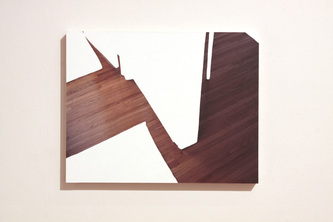
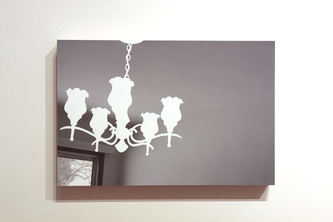
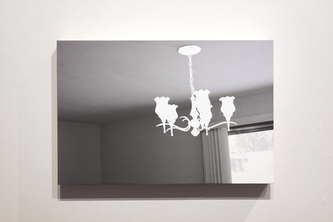


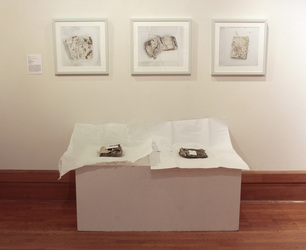
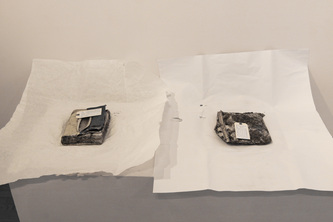



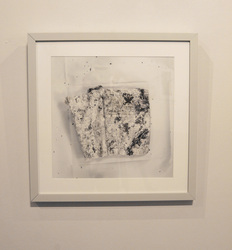

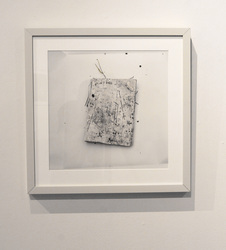

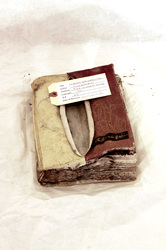

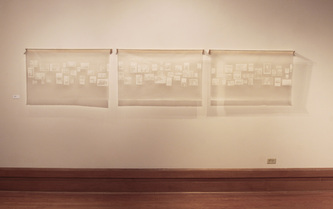
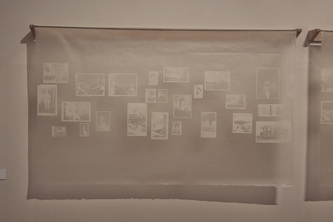
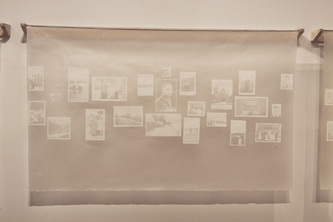

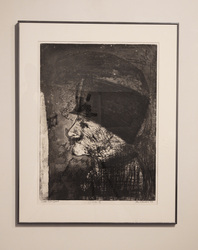

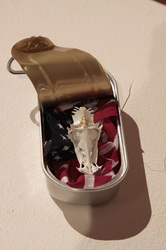

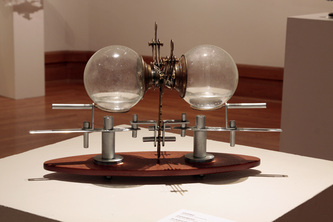
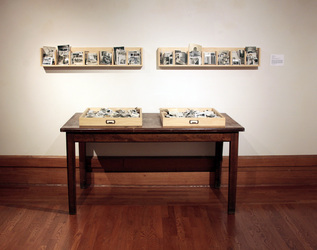
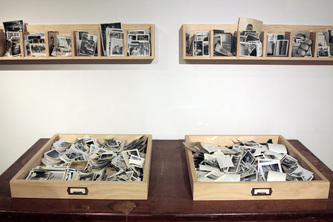










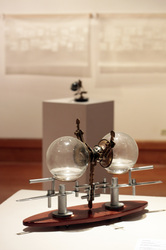





 RSS Feed
RSS Feed
